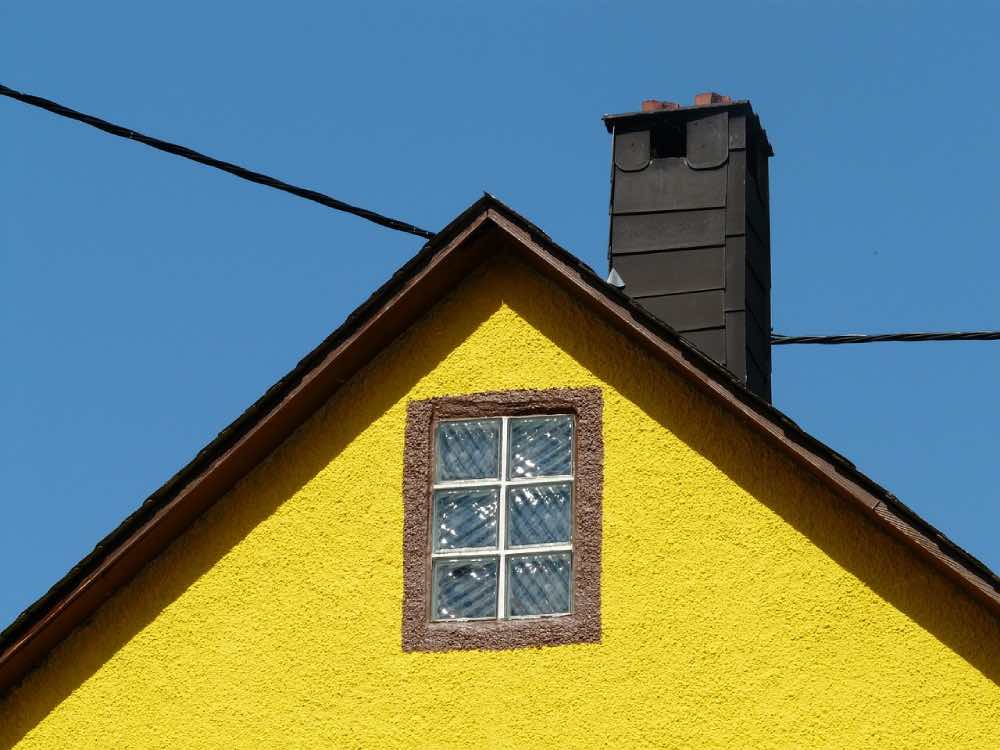Gable roofs, a common sight in various architectural styles, are the epitome of both form and function. But what is a gable roof? Let’s cover details of gable roofs, exploring their history, design, materials, and types.
A Brief History of Gable Roofs
Originating from ancient Greek architecture, gable roofs have been a symbol of durability and design simplicity. The basic design of a gable roof consists of two sloping sides that join at the highest point, forming a triangle.
This design can be seen in the simplest of houses drawn by children to the intricate designs of A-frame homes. Gable roofs are versatile, capable of adopting a simple or complex design depending on a homeowner’s needs.
Defining a Gable Roof
In essence, a gable roof is characterized by two opposite sides sloping downward from a central ridge, forming a triangle at each end of the house. The triangular portion, often referred to as the gable, is enclosed by the walls of the house.
The simplicity of this design is what makes it popular and widely adopted in various architectural styles.
Material Choices for Gable Roofs
Gable roofs can be constructed from a variety of materials. These include:
Metal
Known for its durability and longevity, metal is an excellent choice for gable roofs. It can withstand harsh weather conditions and requires minimal maintenance.
Asphalt Shingles
These are affordable and easy to install, making them a common choice for gable roofs. They come in a variety of colors to match the aesthetics of the house.
Terracotta Tiles
These tiles offer a unique aesthetic appeal and are resistant to fire and water. However, they require a solid structure due to their weight.
Natural Slate
This is a premium roofing material known for its longevity, durability, and natural beauty.
Despite the type of material used, gable roofs can last over a hundred years with proper care and maintenance.
Various Types of Gable Roofs
There are numerous types of gable roofs, each offering a unique look and design to a property. Here are some of the common types:
Open Gable Roof
The open gable roof is the traditional gable roof design, featuring two sides that meet at a single peak. This design is sometimes referred to as a “pyramid roof.”
Cross Gabled Roof
A cross gabled roof has two intersecting gable lines at a 90-degree angle, adding an aesthetic appeal to the property.
Flying Gable Roof
This style features a ridge overhang that extends out beyond the eave overhang, giving the roof a unique look.
Box Gable Roof
A box gable roof overhangs the ends of the home and is enclosed separately from the house’s wall, adding more depth to the design.
Dutch Gable Roof
This is a hybrid of a gable and hip roof, offering a more appealing design and believed to be stronger than regular gable roofs.
Recommended reading is gable vs hip roof for more on the pros and cons of each.
Advantages of Gable Roofs
Gable roofs offer several benefits that make them a popular choice among homeowners. These include:
- Excellent Water Drainage: The steep slope of gable roofs allows for quick water runoff, reducing the risk of water damage.
- Cost-Effective: Gable roofs are generally less expensive to build compared to other roof types due to their simple design.
- Additional Space: The design of gable roofs allows for additional attic space that can be used for storage or converted into living space.
- Versatility: Gable roofs can be designed to fit various architectural styles, from classic to contemporary.
However, it’s worth noting that gable roofs require regular maintenance and inspections, especially on aging roofs, to identify and repair minor issues before they escalate.
Gable Roofs and Weather Resistance
Gable roofs, especially those with a steep pitch, offer excellent resistance against rain and snow. However, in areas prone to high winds or hurricanes, the protective ability of gable roofs can be compromised.
This is due to their design, which may not withstand high winds. Therefore, it’s crucial to ensure your gable roof is well-constructed with adequate support and made from quality materials.
Gable Roofs and Energy Efficiency
Gable roofs also provide opportunities for energy efficiency. The additional attic space can be insulated to improve the home’s energy efficiency. Furthermore, the design of gable roofs makes them suitable for solar panel installation, allowing homeowners to harness solar energy for their homes.
Gable Roofs are Versatile
With their durability, design versatility, and cost-effectiveness, gable roofs continue to be a preferred choice among homeowners.
Their maintenance needs and potential vulnerability to high winds should be considered. Whether you are building a new home or planning a roof replacement, a gable roof is a worthy contender.
